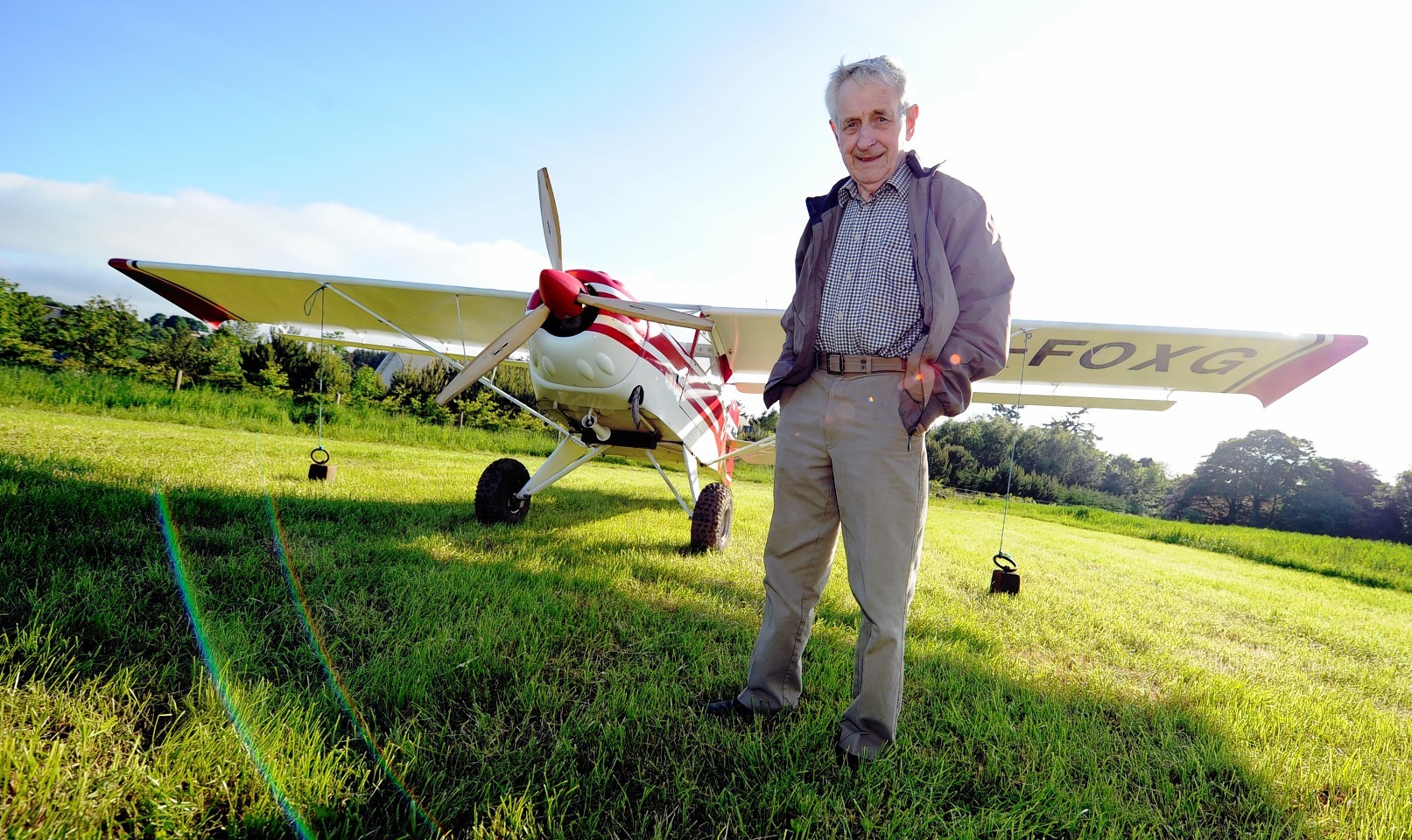A daredevil octogenarian pilot has revealed he feels safer flying a plane than he does driving on the north-east’s roads.
Pensioner Jim McKercher has flown for 14 different airlines, clocking up 14,000 hours in the skies.
The 80-year-old has coped with both engines failing mid-flight halfway across the English Channel and having to negotiate a landing in South Africa with an empty fuel tank.
But despite those heart-stopping moments, he feels more secure in his Denney kitfox two-cylinder engine plane than he does travelling along the A90 in Aberdeen by car.
Mr McKercher, who celebrated his 80th birthday earlier this year by flying his beloved “Miss Marsha”, says it had been his “misfortune” to negotiate Anderson Drive and the Haudagain roundabout on a daily basis.
He travelled from his home in Portlethen to the Cloverleaf Hotel in Bucksburn, where he worked as a night porter, up until last month.
Mr McKercher said: “I feel a lot safer when I am in my plane, it can be very traumatic on the roads.
“Some of the drivers are flashing their lights, tooting their horns and shaking their fists at me and other drivers.”
Last night, a spokesman for road safety charity the Institute of Advanced Motorists said Mr McKercher was “statistically correct” about the dangers – and urged other drivers to take a lead from his professionalism.
Neil Greig, director of policy and research at the organisation, said: “When you are flying, you are in a very controlled environment, but with roads, you pretty much have no control in terms of who has access, or their behaviour whilst driving.
“It is something similar to comparing Formula One drivers with driving on the A90. In Formula One, everybody is going in the same direction, you have pretty good safety equipment and if you do have a crash, the chances are you will survive. The A90 is very unpredictable, our roads system does not necessarily protect you if you make a mistake.
“We have seen a spate of crashes recently on north-east roads. If people were as professional in their driving as this chap is about his flying then we would all be a little bit safer.”
Professor Bill Naphy, an expert in risk at Aberdeen University, said Mr McKercher had a better appreciation than most people of what truly constituted a danger.
“Fear of flying is widespread while fear of riding in a car is almost unknown. But the car is by far the more dangerous way to travel,” he said.
“We worry about asteroids hitting the earth, tsunamis, pandemics and Maya calendars counting down to Doomsday even when we’re much more likely to die slipping in the shower.”
